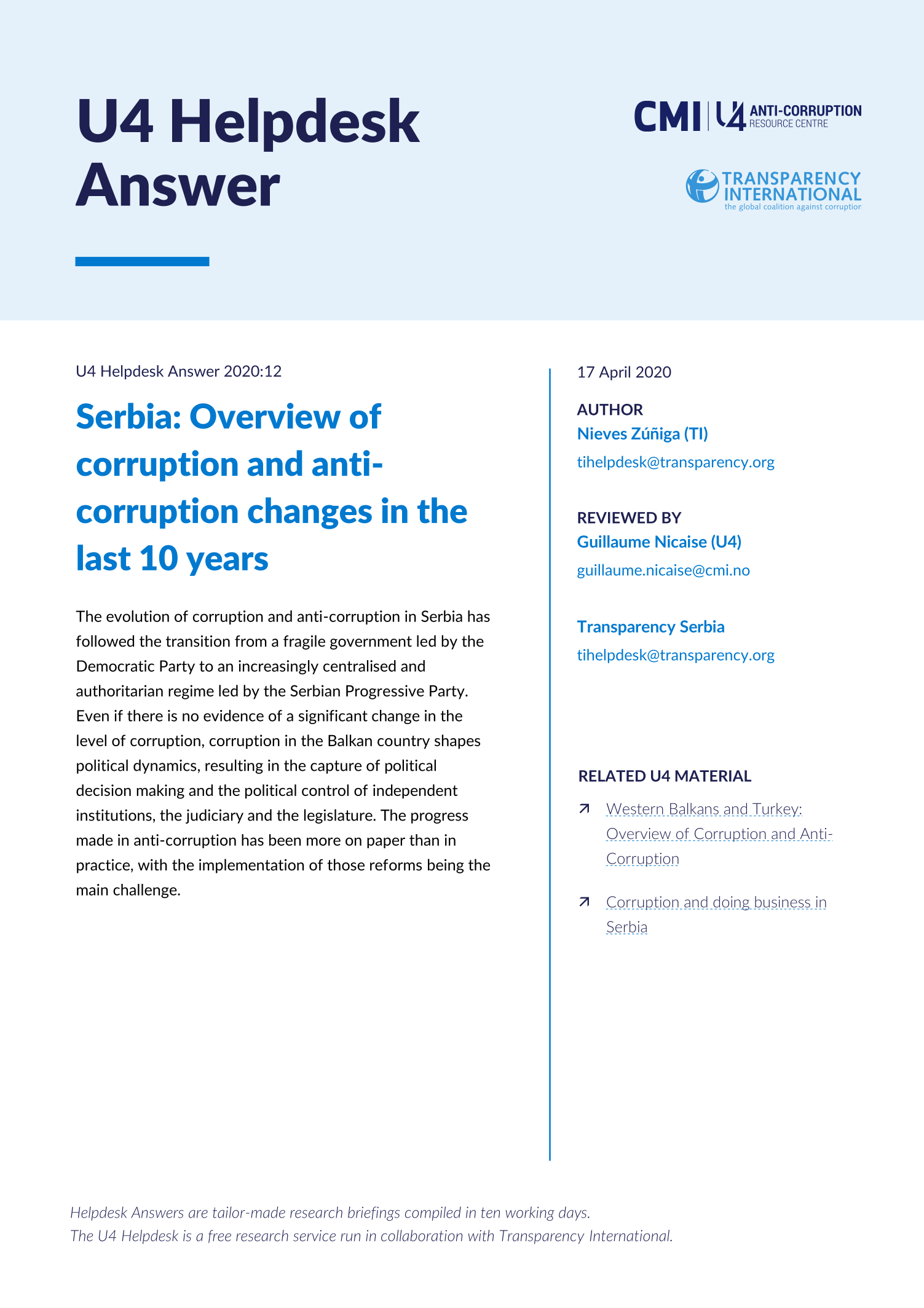Main points
- In the last ten years there has not been a significant change in the level of corruption in Serbia.
- The dynamics of corruption have adapted to political dynamics associated with increasing centralisation and control of the ruling party over the three branches of the government.
- There have been steps towards increasing transparency and anti-corruption reforms in paper.



